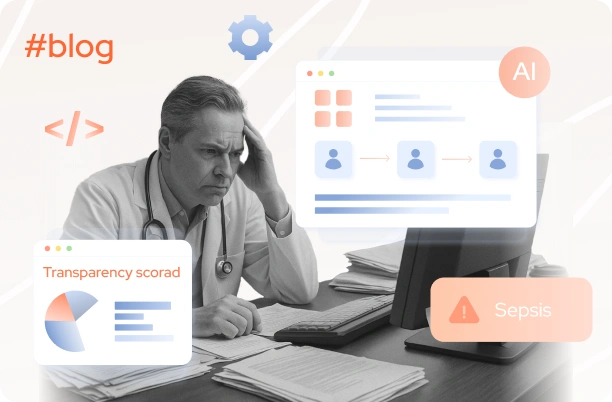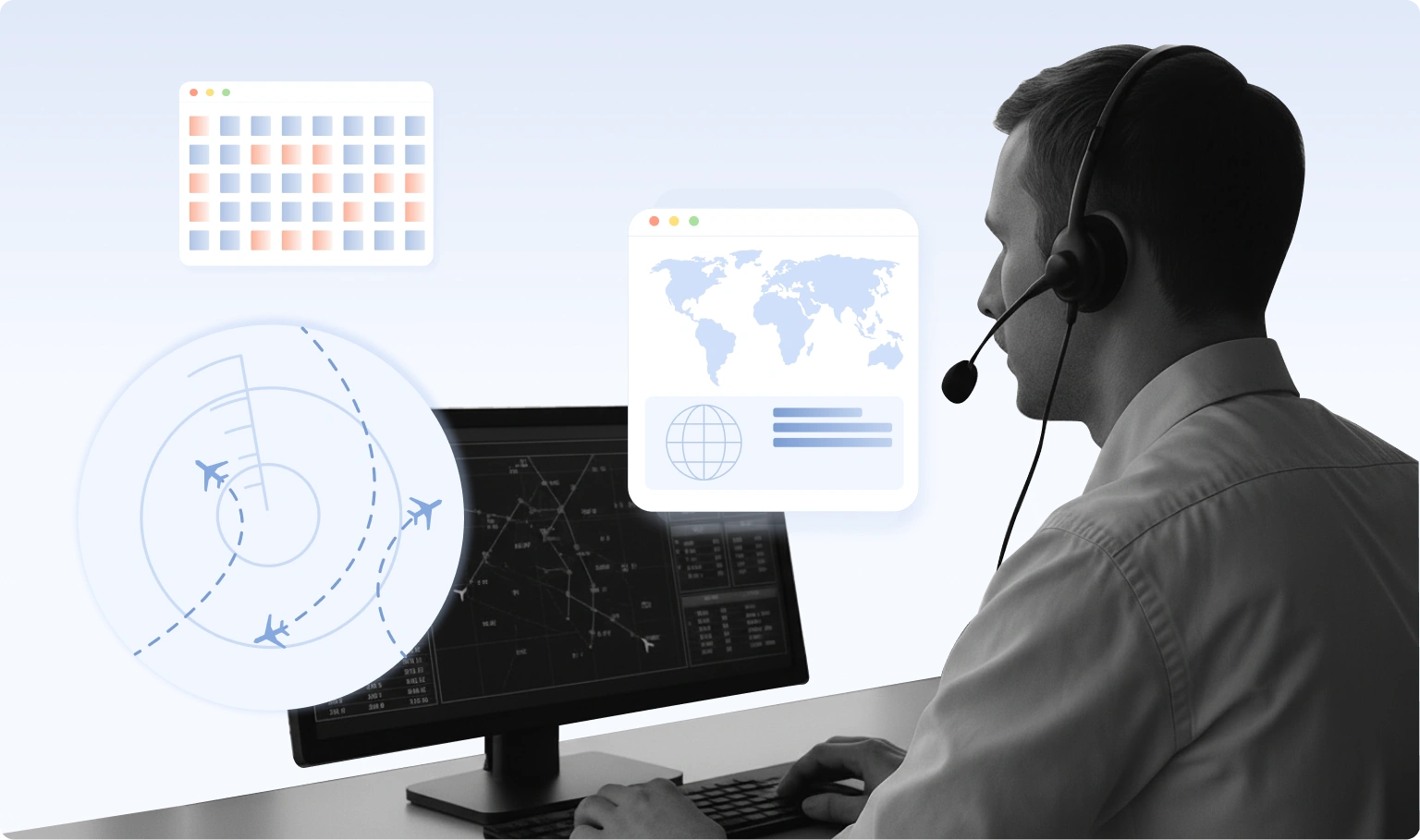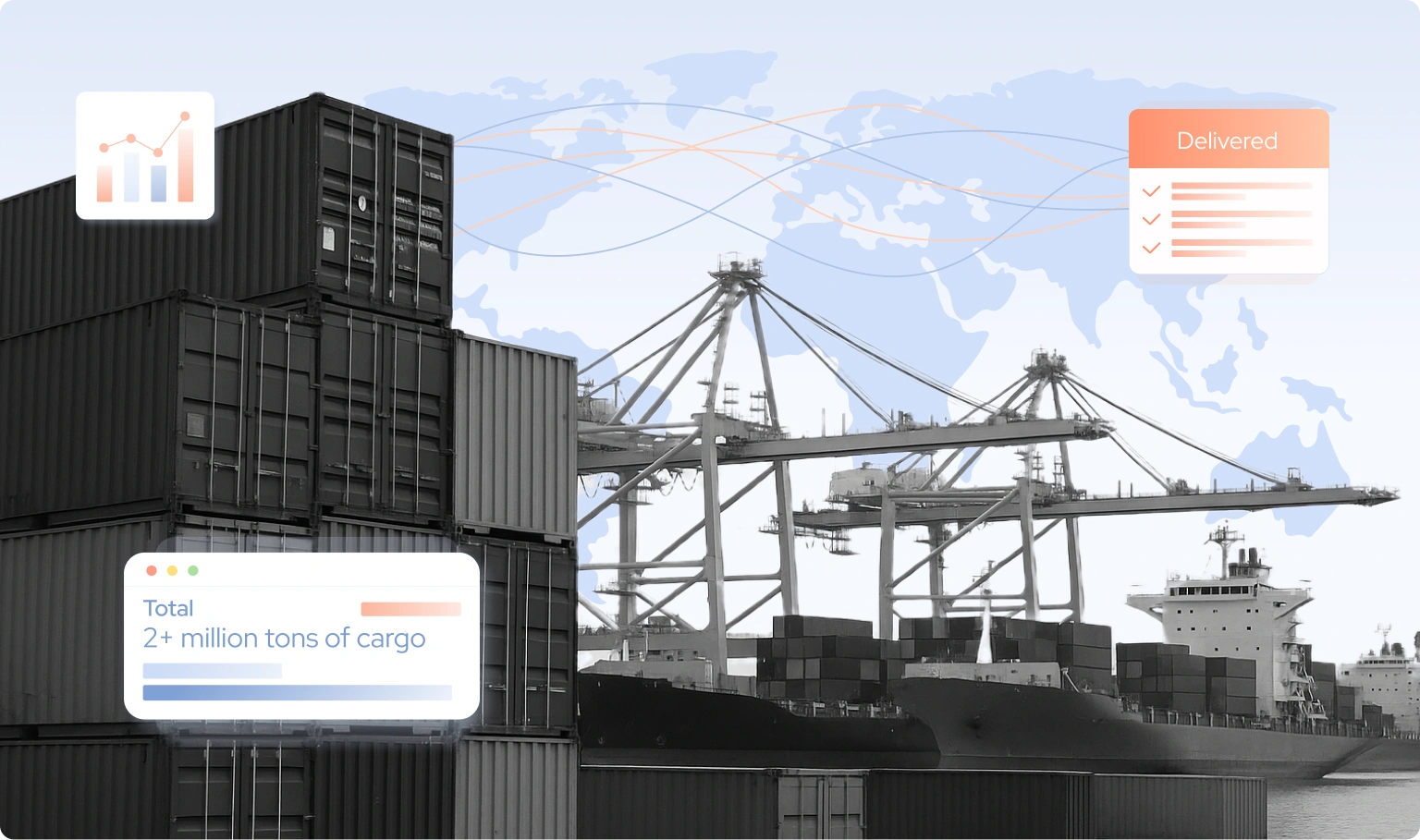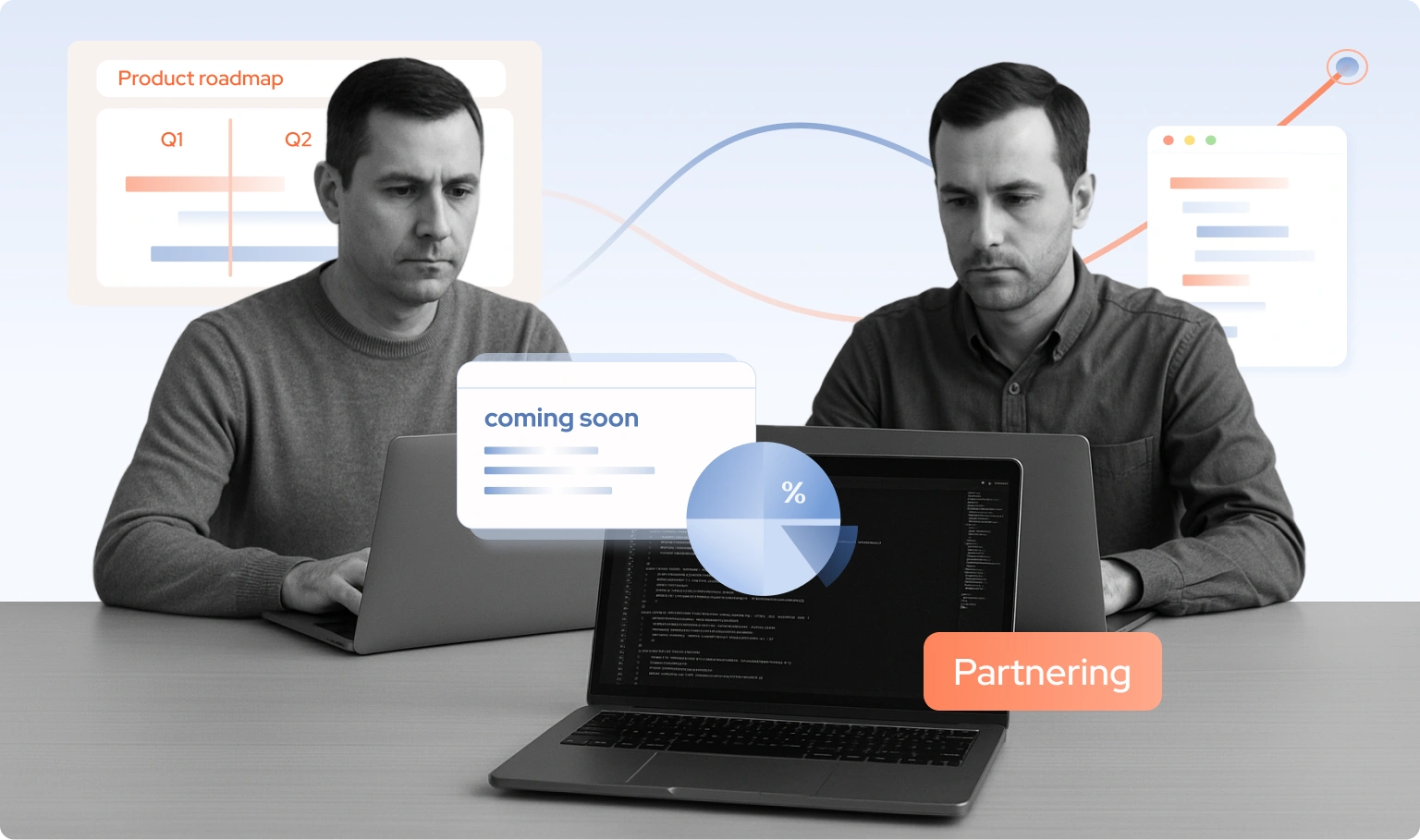Legacy System Modernization Services
Upgrade your systems on time to stay competitive in the current fast-paced digital environment.
Talk to us

.svg)




.svg)

TYMIQ expertise in legacy system modernization
As a legacy system modernization company, we offer a highly experienced management and engineering team for upgrading your current systems seamlessly, avoiding disruption of the ongoing operations.

You will get:
- Optimized architecture and database
- Migration to a modern technology
- Industry and security standards compliance
- Fresh convenient functionality
- Attractive and engaging design
- Alignment with your business needs and objectives
Why it’s important to modernize a legacy system on time
Legacy systems are painful for their owners, as they slow down or even block business processes, increase the risks of security issues, and make it harder to keep up with the changing market dynamics. The on-time system modernization helps you avoid the following drawbacks in your work:
The expenses of legacy system maintenance and support are typically higher than the cost of its modernization. The maintenance costs of sophisticated, large-scale systems may reach up to $7 to $19 million dollars per year.
Legacy systems have more vulnerabilities that can be easily exploited by cyber attackers. According to the research, 60% of small companies shut down within six months of falling victim to a data breach or cyber attack.
Legacy systems are far less efficient than the modern ones and do not align with the current IT demands. Poor performance significantly slows down operation processes and reduces the employees’ productivity.
Business requirements are subject to constant changes; and legacy systems are unable to keep up with this pace. Investing in obsolete technologies makes your business lose against the competitors.
Legacy systems in use: reasons, challenges, use cases
Even when acknowledging the high maintenance costs and the need for modernization, many companies still hesitate to reengineer their legacy systems. Factors such as familiarity, fear of technology risks, and uncertainty about the modernization process often hold them back. Below are the key reasons behind this hesitation.
Legacy system features
- Built on obsolete tech
- Prone to security risks
- Expensive to operate
- Hard to customize and evolve
Why still in use?
- Security concerns
- Pressure to deliver service non-stop
- Fear of disruption
- Risk-averse culture
- No tech expertise to modernize

View our full infographics covering numbers and outcomes of legacy systems that are still in use.
The scope of legacy system modernization services we provide
We offer end-to-end services for updating and replacing an outdated or inefficient system, partially or fully. Find the service you need or contact us for a combination:









What differentiates legacy system modernization with TYMIQ?
For years of challenging legacy system modernization, our team has gained a solid credibility among TYMIQ’s partners and customers, mostly due to the following factors:

Our team knows how to make the migration as safe and seamless as possible, avoiding disruption of the ongoing operations.
We take responsibility for conducting an audit of a legacy system to evaluate the necessity and scope of modernization.
We draw up accurate strategic plans for development and migration of projects to new technologies.
We always care about the security of customer’s data by establishing a strong security policy and keeping compliant with the relevant data protection standards.
TYMIQ’s software engineers demonstrate proficiency even when it comes to legacy technologies like VBA, MS Access, Delphi, etc.
While working on a project, our specialists dive deep into the business logic and existing processes to figure out a solution that better suits the goals and environment of this particular customer.
We are able to adjust to any changes in the project requirements and scale the team accordingly to accommodate these changes.

Get the comprehensive TYMIQ software modernization checklist
A concise 25-page guide with essential steps and processes for legacy software modernization. Packed with practical insights and expert tips, it’s perfect for managers and teams new to software reengineering.
Our management approach to legacy system modernization
We approach each case individually and develop modernization scenarios best fitting your business requirements. You will be able to see, even for every single task, when it is estimated, planned, taken into work, is being tested, or ready for review. Together with release plans made up together with you according to the required priorities, you will clearly understand the current situation on the project.
Being fully open and willing for communication on any issues, we strive to create absolutely comfortable working conditions, where you can be calm and do not worry about potential problems.

You will have access to the history and current state of every single task.


You will be able to talk to any person involved into the modernization process.


We provide you a possibility to monitor the status of your project 24/7.


Our tech stack
Modernizing a legacy system requires profound expertise in both old and modern technologies. Our team has the right set of skills to implement your most challenging projects.
Some of our legacy system modernization case studies
We helped more than 50 companies modernize their systems to meet the latest requirements (including national legislation) and achieve more flexibility. Among these projects are high load enterprise systems that handle large volumes of server requests and backend computations, providing fault-tolerance. While many of our projects are under NDA, we’re pleased to showcase a selection of featured projects we've successfully delivered in legacy system modernization.
Industries where we provide legacy system modernization services
We apply an individual approach in our work to meet your specific requirements and the requirements of your industry. Our goal is to uncover the full potential of industry-specific legacy system modernization, so that you can optimize your business and achieve lasting value for it. We also successfully deal with the cross-industry environment.










Why rely on TYMIQ?
Our goal is to solve your business challenges and bring maximum value to your company by modernizing your outdated technologies. While working on a project, we dive deep into the business logic and existing processes to see the picture from the same perspective as you and verify that the modernization direction is correct along the way.
.svg)
TYMIQ is a truly reliable partner who works inclusively and makes a single whole with a customer’s team.

We provide fairly rare and deep expertise in legacy system modernization and digitalization of enterprise systems.
.svg)
We modernize the clients’ technologies to not only make the system work effectively, but also ensure its lasting value for years ahead.
Open up new horizons for your business development with a modernized system
Drop us a message, and our specialists will give a free in-depth consultation on your legacy system modernization.


“Be diligent in your choice of a legacy modernization company. Verify their proficiency not only in making the system functional, but also in executing it with technical excellence. "Build" is not equal to "rebuild".”
Recommended reading

Reducing technical debt in ETL systems: a guide for legacy integrations
Legacy ETL systems silently accumulate debt - slowing delivery, raising costs, and risking compliance. Discover how to modernize data pipelines without disruption.

When maintenance is no longer enough: The vendor’s role in software modernization
Legacy systems can’t scale or comply forever. Learn how proactive vendors modernize critical tech without disruption, delays, or audit risks.

AI modernization: Developing clinical systems with artificial intelligence
Learn strategies, case studies, and governance best practices to deliver patient-centered, compliant, and future-ready care.
FAQ

By a legacy system, we mean the system based on decades-old, obsolete technologies that a company has to use to support their vital business processes, perform essential functions, and maintain daily operations. Typically, such systems are no longer supported and hold the companies back from business progress and scalability.
Legacy software is not just about outdated and unused systems. It reaches its legacy status when the costs and risks of upgrading to modern tech outweigh the benefits, justifying the decision to stick with it.

Legacy system modernization is a set of services aimed at upgrading an outdated or inefficient system to gain additional value for business. Typically, the modernization lifecycle includes a legacy system assessment, defining the modernization scope, executing the modernization process, implementing upgrades, testing, and providing ongoing support.

Legacy systems pose compliance, security, and integration problems that kick the companies out of the market competition. The on-time system modernization helps you avoid the following drawbacks in your work:
• High maintenance costs - The expenses of legacy system maintenance and support are typically higher than the cost of its modernization.
• Security threats - Legacy systems have more vulnerabilities that can be easily exploited by cyber attackers.
• Poor scalability and performance - Legacy systems are far less efficient than the modern ones and do not align with the current IT demands.
• Limited business opportunities - Business requirements are subject to constant changes; and legacy systems are unable to keep up with this pace.

The main legacy system assessment challenges include:
1. Understanding the existing codebase and architecture - When the developers and architects who originally designed the system are no longer available, it may be difficult to understand the reasoning behind certain design decisions and functions.
2. Outdated technologies and third-party libraries - It’s an indispensable attribute of any legacy system, which causes incompatibility with other solutions and harder migration to the modern platforms.
3. Lack of application knowledge within the organization - Typically, legacy systems are associated with poor documentation. Over the years, it can simply disappear or get obsolete.
4. Business logic embedded in the code - Changes that a company may need to introduce to its operation system can disrupt some business-critical processes. This happens when the business logic is deeply embedded in the code.
5. Identifying and mitigating risks - Modernizing a legacy system implies new digital capabilities and significant increase in its agility. This means that the business must be aware of the potential risks associated with outdated IT infrastructure and get prepared for large-scale changes accordingly.

If your legacy system has performance issues, is hard to maintain, impossible to integrate with other systems, and is ultimately incapable of meeting modern standards of security, then modernization might be worth considering. Regular audits and feedback received by your IT team will also be instrumental in assessing its current state. At TYMIQ, we also provide IT consulting and audit services if you need external expert assistance.

Actually, there are several proven modernization strategies designed to cater to specific business needs and challenges. The selection of a strategy depends on the business objectives, workflows, and constraints.
1. ‘Adapt’ strategies
- Replatforming (‘lift and reshape’): Migrating applications to a new platform with optimizations to prepare for a new environment.
- Rehosting ( ‘lift and shift’): Migration of the applications to another environment, without changing the codebase for minimal downtime The primary goal is to migrate quickly under tight deadlines and with minimal resources.
2. ‘Improve’ strategies
- Refactoring: Making code changes to improve structure, readability, and maintainability. Typically, refactoring is used to identify and eliminate idle features, streamlining maintenance.
- Rearchitecting: Changing the app's architecture to address scalability, performance, or other critical issues. It goes beyond refactoring, as you restructure the entire system to align with modern design principles.
3. ‘Transform’ strategies
- Rebuilding: Redesigning apps from scratch to leverage modern development tools and practices.
- Replacing: Introducing new software or custom-built solutions, to meet the business requirements with zero downtime.

The time frame for modernization is based on the complexity of the system and the strategy that you chose. It could be only a couple of months, or for bigger, more complex systems, perhaps several years. A pronounced staged implementation, by the way, usually paves for a smoother transition.

There may be interruptions during migration; however, proper planning and a phased approach can minimize downtime. Communication with stakeholders is very important to set up their expectations. At TYMIQ, we have implemented several projects where uninterrupted operation of a modernized system was a requirement, and our team kept it functional during migration.

Legacy system modernization may seem complex and requires excellent knowledge of the old system and new technologies. Bringing in the experts can greatly minimize risks and assure proper and efficient handling of the process. Many businesses are turning to third-party consultants or companies that specialize in legacy system modernization, like TYMIQ.

Although modernization carries high upfront costs in most cases, they are usually outweighed by savings in maintenance, security, and operational efficiency over time. Costs vary depending on the extent of modernization undertaken, the strategy chosen, and any new or additional hardware or software required.

Success can be evaluated through improved system performance, fewer outages, savings on operational costs, security enhancement, ability to scale, and integrate with current technologies. Monitoring KPIs before, during, and post-modernization will assist in assessing the attainment of objectives.

%20-%20How%20to%20audit%20a%20legacy%20system%20before%20planning%20a%20migration.webp)
%20-%20Approaches%20to%20Legacy%20system%20modernization.webp)

































.svg)
.svg)

